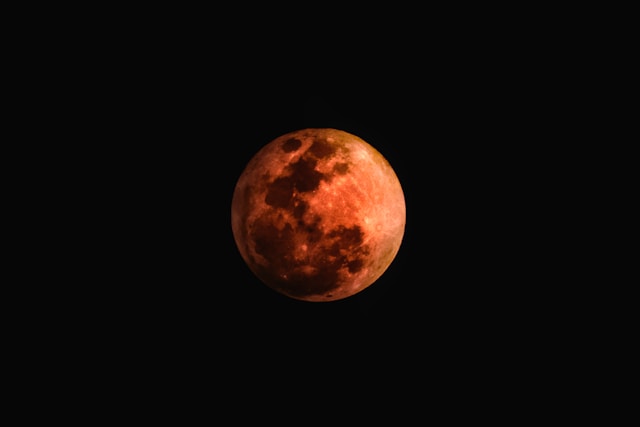Rare blue supermoon dazzles onlookers, appearing 14% larger and 30% brighter, with a hint of red from wildfire dust in North America
Skywatchers around the globe were treated to a breathtaking celestial event as a rare blue supermoon illuminated the night sky on Monday, August 19, 2024. This phenomenon occurs when a full moon coincides with its closest approach to Earth, making it appear significantly larger and brighter than usual. Adding to its rarity, this supermoon was also a blue moon, a term used when two full moons appear in a single calendar month or four full moons occur within a season.
The spectacle was visible from various iconic locations worldwide, with photographers capturing stunning images. In South Africa, just south of Durban, the moon lit up the night, creating a serene and mystical ambience. Meanwhile, in East Sussex, England, the supermoon’s brilliance was captured against the backdrop of Friston’s countryside, its luminosity shining through the clear skies.
Embed from Getty ImagesThe moon also graced the skyline of Istanbul, hovering over the historical Galata Tower, while in Paris, it added a magical touch to the city’s already enchanting atmosphere. In Germany, the supermoon made its presence felt in Dortmund, drawing the attention of residents and photographers alike.
Despite its name, the blue moon is not actually blue. Instead, the name originates from its rarity, as it only occurs once every two to three years. This particular blue moon was further enhanced by a reddish hue, a result of dust from wildfires in North America. This subtle red glow added an eerie yet captivating quality to the moon’s appearance, making the event even more extraordinary.
The supermoon appeared up to 14% larger and 30% brighter than a regular full moon, thanks to its proximity to Earth. This dazzling display will not be the last of its kind this year. The next supermoon is scheduled for September 18, followed by others on October 17 and November 15. September’s supermoon will be particularly noteworthy as it will coincide with a partial lunar eclipse, promising another must-see celestial event.
The term “supermoon” was first coined by astrologer Richard Nolle in 1979, referring to either a new or full moon that occurs when the moon is within 90% of its closest distance to Earth. Since then, the term has gained popularity, and each supermoon draws the attention of sky enthusiasts and casual observers alike.
Analysis:
Political Perspective: The occurrence of such rare celestial events often sparks conversations about funding and support for scientific research and space exploration. Governments worldwide may face increased public interest in space-related programs, leading to potential political pressure to allocate more resources towards these initiatives. In nations where space exploration is already a priority, like the United States or China, events like the Blue Supermoon can be leveraged to bolster public support for ongoing missions. On the other hand, countries with limited resources may debate the prioritization of space exploration over other pressing needs, such as healthcare or education.
Social Perspective: Socially, the blue supermoon provided a unifying experience for people across the globe. In an era marked by division and conflict, such natural phenomena remind us of our shared humanity and the wonders of the natural world. Social media platforms buzzed with images and reactions, as people from different cultures and backgrounds expressed awe and wonder. This collective experience highlights the importance of nature in bringing people together, offering a moment of peace and reflection amidst the complexities of modern life.
Racial Perspective: From a racial perspective, the universal visibility of the blue supermoon offers a rare moment of equality, where people from all walks of life can witness the same event, regardless of their location or socioeconomic status. However, access to high-quality viewing experiences can still be limited by factors such as light pollution in urban areas, where marginalized communities often reside. This disparity serves as a reminder of the ongoing issues related to environmental justice, where access to natural beauty and clean environments remains unevenly distributed.
Gender Perspective: Gender dynamics can also be observed in the field of astronomy and space sciences, traditionally dominated by men. Events like the blue supermoon can inspire young girls and women to pursue careers in these fields, challenging the gender norms that have long been associated with science and technology. Highlighting the contributions of female astronomers and scientists during such events can further promote gender equality in STEM (Science, Technology, Engineering, and Mathematics) disciplines.
Economic Perspective: Economically, the blue supermoon had a significant impact on various sectors, particularly tourism and media. Destinations known for their clear skies, such as observatories and national parks, likely saw a surge in visitors eager to witness the event. This boost in tourism can have a positive ripple effect on local economies, especially in rural areas where such events can attract significant numbers of visitors. Media outlets and tech companies also benefited from increased traffic, as people turned to live streams, news articles, and social media to learn more about the phenomenon.
Moreover, the interest generated by the blue supermoon can translate into increased demand for astronomy-related products, from telescopes to educational materials. This surge in consumer interest can lead to growth opportunities for businesses operating within the space and science education sectors. However, the economic benefits of such events are often unevenly distributed, with larger companies and well-known tourist destinations reaping the most rewards.
